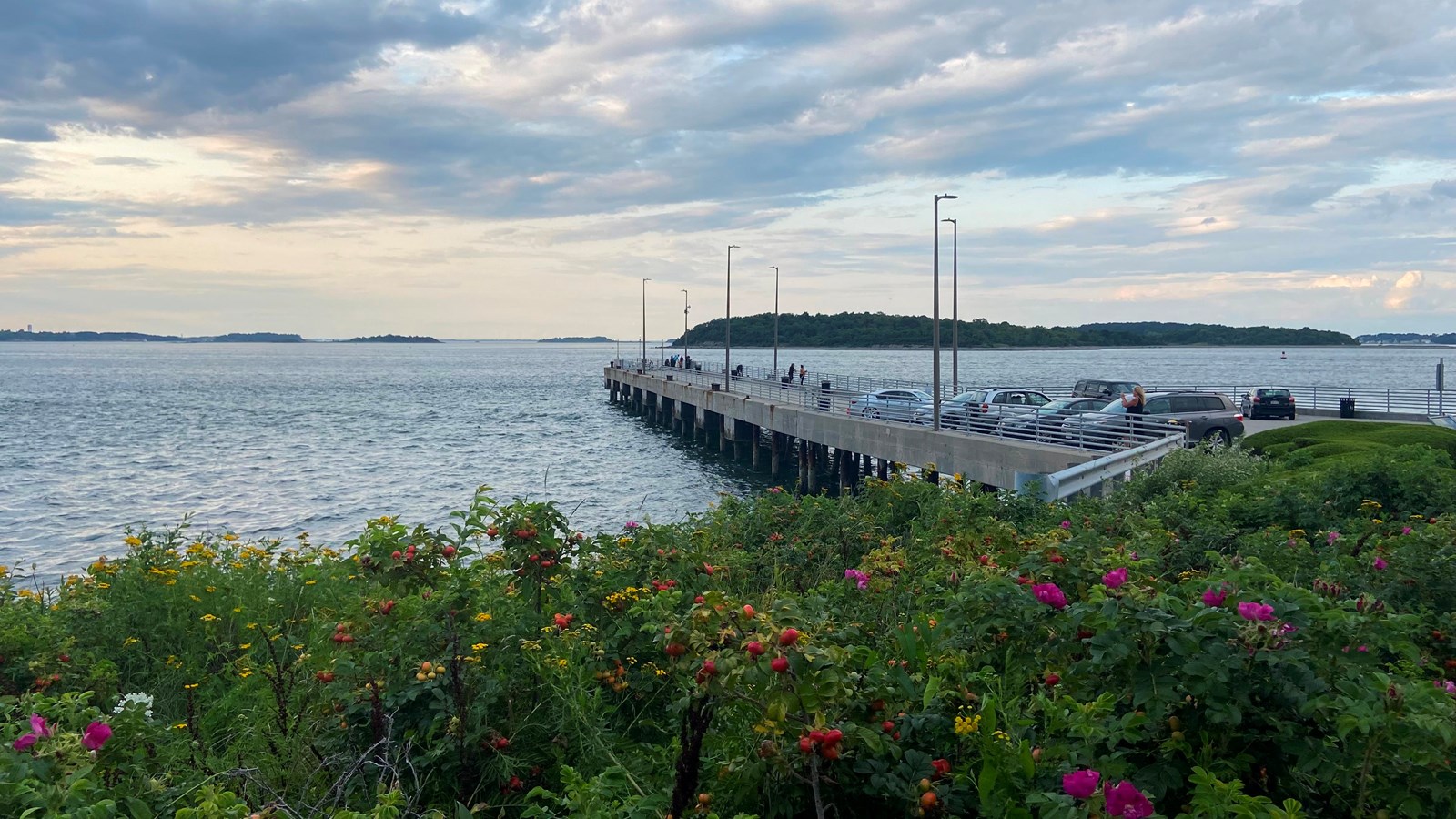Last updated: October 27, 2023
Place
Nut Island

NPS Photo/ K. Woods
One of just five peninsulas in the harbor, Nut Island sits just beyond Hough's Neck in Quincy. The peninsula is just over eight miles away from Long Wharf and boasts 20.5 upland acres.
Indigenous people, including the Massachusett Tribe, likely accessed Nut Island seasonally for thousands of years before European colonizers took ownership of the land.
Colonists used the island for cattle, and in 1793, colonists constructed two driftways that anchored both Nut Island and World's End to the mainland. Put in place to ease the movement of cattle to and from the mainland, the driftways permanently changed the topography of the harbor.
The Alger Foundry, of South Boston established an ordnance testing site on Nut Island in 1876. They conducted tests with 15-inch guns, and projectiles that weighed as much as 500 pounds. The testing site used targets located across the way on Peddocks Island. In 1890, the Commonwealth acquired the peninsula to expand Boston's sewage system. Construction began on the facility three years later. The Metroplitan District Commission took control of the facility in 1919.
By 1952, The Nut Island Primary Wastewater Treatment Plant opened under commission from the Massachusetts Water Resource Authority and the MDC and replaced the original facility.1 Designed to treat the sewage produced in the Southern half of the Boston area, it treated and released sewage a mile out into the harbor. The plant's design, considered "modern" at the time of its opening, left it vulnerable to strain. Though staff have fond memories of their time at the plant, they grew disenfranchised and did not inform higher ups of maintenance issues. Both the plant’s susceptibility to strain and a lack of maintenance contributed to four engines shutting down in 1976, and eventually led to disaster in1982 when staff inadvertently dumped 3.7 billion gallons of raw sewage into the harbor.2 The town of Quincy, and several environmental organizations brought Civil Action suits against the MDC for the pollution. The court found MWRA liable as the successor to MDC and from there the parties focused on remediation efforts.3
Construction of the Deer Island Waste Water Treatment Plant began in 1989. Engineers created an interisland tunnel between Deer and Nut and built new facilities on the island. In 1998, the Commonwealth demolished the old Nut Island Plant and opened Nut Island headworks. Owned and operated by MWRA today, Nut Island serves as a preliminary treatment location for waste, before it is sent to Deer Island. The Nut Island outfalls, which can be used to drain the cleaned sewage into the water are no longer operational, but several outfalls remain in place, ready for use in case of emergency.4 The area surrounding the facilities supports a public and a popular fishing spot.
Learn More...
Footnotes
- Olmsted Center for Landscape Preservation, Cultural Landscape Report: Boston Harbor Islands National & State Park, Volume 1: Historical Overview (Boston: National Park Service, 2017), 13-16, 173,178; Olmsted Center for Landscape Preservation, Cultural Landscape Report: Boston Harbor Islands National & State Park, Volume 2: Existing Conditions (Boston: National Park Service, 2017), 163-165.
- Paul F Levy, "When Good Teams Go Wrong," The Harvard Business Review, March 2001, Retrieved from https://hbr.org/2001/03/when-good-teams-go-wrong.
- United States of America, Plaintiff, Appellee, v. Metropolitan District Commission, et al., Defendants, Appellees. Conservation Law Foundation of New England, Inc., Plaintiff, appellant, 847 F.2d 12 (1st Cir. 1988) in Justia US Law, https://law.justia.com/cases/federal/appellate-courts/F2/847/12/193787/, (Accessed April 4, 2023).
- Olmsted Center for Landscape Preservation, Cultural Landscape Report: Boston Harbor Islands National & State Park, Volume 2: Existing Conditions (Boston: National Park Service, 2017), 163-165; MWRA, "Appendix I An Overview of the MWRA Sewerage System and Facilities," https://www.mwra.com/harbor/enquad/pdf/2001-04_overview.pdf, Accessed April 4, 2023, 12-18.
